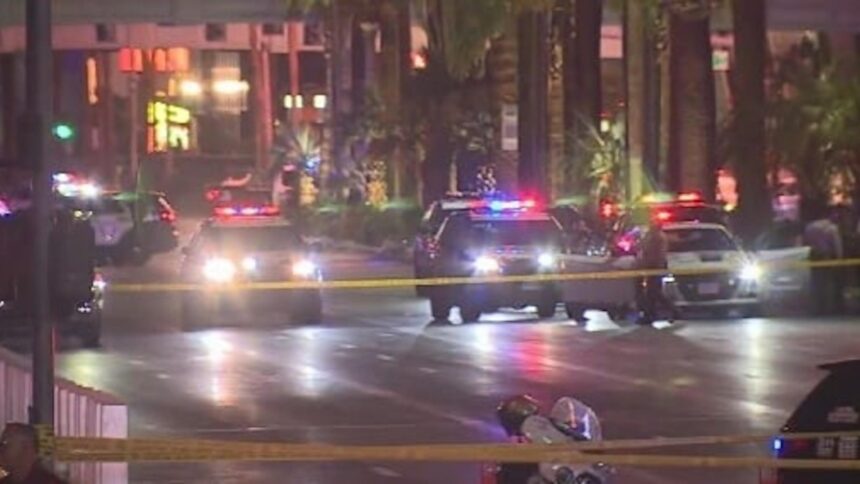How Livestreaming Transformed Emergency Response During a Las Vegas Strip Shooting
Massive Surge in Emergency Calls Triggered by Live Broadcast
In a startling incident on the Las Vegas Strip, a live-streamed confrontation rapidly escalated into a shooting, prompting an unprecedented wave of emergency calls. Within minutes, local 911 centers were inundated with over 300 calls from viewers who recognized the individuals involved, many of whom had followed the streamers regularly. This overwhelming response temporarily strained dispatch resources, causing delays in handling other urgent emergencies. Call operators reported that many callers provided detailed, real-time updates, effectively acting as remote eyewitnesses and enhancing situational awareness for first responders.
- Incident Time: Around 9:45 PM PST
- 911 Call Volume: Exceeded 300 calls within 10 minutes
- Caller Demographic: Frequent livestream audience members familiar with the subjects
- Dispatch Impact: Temporary overload of emergency communication channels
| Response Type | Details |
|---|---|
| Police Units Dispatched | 20 patrol cars deployed |
| Medical Assistance | 3 ambulances on scene |
| Incident Outcome | One person hospitalized, condition stable |
Challenges Faced by Emergency Dispatch Amid Real-Time Social Media Reports
Emergency communication centers are increasingly grappling with the influx of live facts from social media platforms during critical events. The Las Vegas shooting exemplified this trend, as 911 operators were overwhelmed by calls and messages from livestream viewers who claimed to have been following the suspects’ activities regularly. While these firsthand accounts can provide valuable intelligence, the sheer volume and urgency of incoming reports complicate call prioritization and verification, stretching resources thin and risking delays in response.
Main obstacles for dispatch centers include:
- Handling surges in call volume without compromising response times to verified emergencies
- Distinguishing accurate information from potential misinformation or rumors
- Ensuring seamless communication across multiple agencies in real time
- Maintaining transparency with the public while safeguarding operational security
| Issue | Effect | Typical Mitigation |
|---|---|---|
| Spike in Calls | Dispatch congestion and slower response | Prioritize critical emergencies; redirect non-urgent calls |
| Risk of False Information | Misuse of emergency resources | Verify reports through trusted sources |
| Coordination Difficulties | Communication breakdowns | Implement unified command structures and liaison roles |
The Role of Public Eyewitnesses in Shaping Law Enforcement Response
The flood of 911 calls from livestream watchers during the Las Vegas shooting marks a significant evolution in how public eyewitness accounts influence police operations. Thousands of viewers provided immediate alerts about suspicious behavior, enabling law enforcement to quickly narrow down suspect locations and details with a precision previously unattainable through traditional methods. However, this surge also introduced challenges in filtering credible information from noise, underscoring the necessity for advanced triage systems within emergency dispatch.
Notable impacts of this growth include:
- Improved Real-Time Intelligence: Multiple eyewitness perspectives offer a complete view that can confirm or challenge official narratives.
- Resource Strain: The volume of calls risks overwhelming dispatch centers, potentially delaying critical responses.
- Evidence Collection: Livestream footage provides unedited documentation valuable for investigations and legal proceedings.
- Community Involvement: Heightened public participation promotes a collaborative approach to safety but requires education on responsible reporting.
| Factor | Effect | Consideration |
|---|---|---|
| Report Volume | Surge during emergencies | Need for effective triage protocols |
| Accuracy | Varies by eyewitness outlook | Cross-verification essential |
| Technology | Widespread use of livestreaming tools | Dispatcher training required |
| Legal Implications | Preservation of evidence | Privacy and consent considerations |
Strategies for Effectively Managing Livestream Reports During Emergencies
During high-stakes events like the Las Vegas Strip shooting, emergency response teams must handle a deluge of livestream-based reports efficiently. Prioritizing calls grounded in verified data and establishing specialized teams to assess digital content can streamline operations.Coordinated efforts between 911 dispatchers and social media monitoring units are crucial to minimize redundant information and ensure that actionable intelligence reaches responders promptly.
Recommended best practices include:
- Creating centralized digital monitoring hubs dedicated to collecting and authenticating livestream data.
- Training dispatch personnel to recognise visual and auditory indicators of genuine threats versus non-emergency chatter.
- Leveraging geo-tagging technology to accurately locate incidents in real time.
| Initiative | Advantage | Illustrative Example |
|---|---|---|
| Dedicated Social Media Analysts | Rapid filtering of pertinent information | Tracking suspect movements through livestream comments |
| Geo-Location Tools | Precise incident mapping | Identifying shooter’s exact position on the Strip |
| Dispatcher Education | Enhanced interpretation of livestream cues | Distinguishing urgent threats from background noise |
Conclusion: The Evolving Intersection of Livestreaming and Emergency Response
The overwhelming influx of 911 calls from livestream viewers during the Las Vegas Strip shooting underscores the transformative role of social media in real-time crisis reporting. As digital platforms become integral to how incidents are witnessed and reported, emergency services face new challenges in verifying and managing this information while maintaining public safety. This event highlights the urgent need for coordinated strategies between law enforcement and the online community to navigate the complexities of modern crisis communication effectively.
